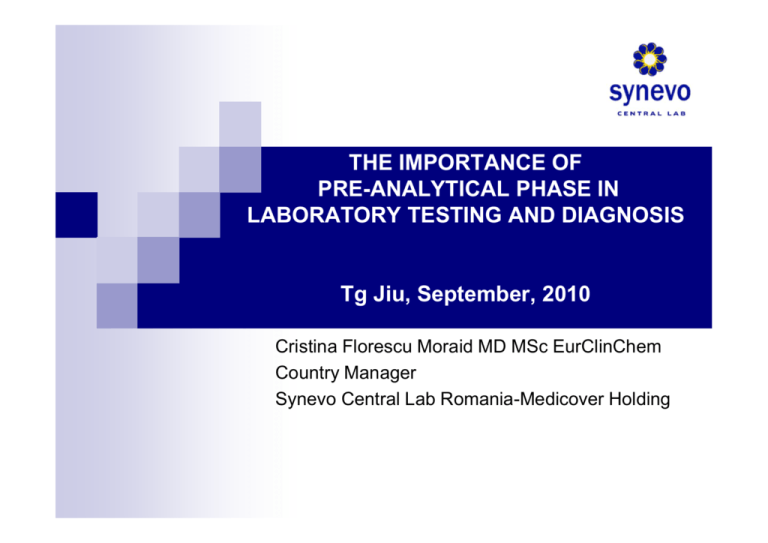What Does Analytical Balance Price Mean?
Wiki Article
The Greatest Guide To Analytical Testing
Table of ContentsNot known Details About Mettler Toledo Analytical Balance The Only Guide for Analytical LaboratoryNot known Factual Statements About Analytical Balance Calibration The Basic Principles Of Mettler Toledo Analytical Balance
The scheduling problems with training can be overcomedigital resources come anytime and also anywhere the trainee has internet accessibility. analytical lab. Below's the killer part of application thoughin an instance research study that I have complied with, a colleagues of trainees then collect to educate each various other, based on what they have actually discovered online.It gets better, the trainees are after that called for to use their wearable or mobile tech to videotape the exact same procedures during "everyday" work over a set duration or number of events, and these videos are after that uploaded for review to guarantee training transfer right into the office. This technique is advancement instead than revolution, but it has so much that declares going for it.
, then, with some standardization, we can probably start to develop an electronic educational program that might be made use of on a sector broad basis, which is the second crucial proposal I desired to lead us in the direction of.
We may want to ask ourselves if we are truly supplying a fantastic commercial training and also learning experience to our personnel, as well as exactly how anything we do to improve the effectiveness of research laboratory training, may pay us pack really swiftly in terms of boosted compliance, top quality, as well as laboratory efficiency. In addition to the spirits uplift in our personnel who really feel a lot more "spent in" as well as are able to happily display their electronic badges which are gathering nicely towards their Registered Analytical Drug store accreditation.
The 7-Minute Rule for Emsl Lab
Pure and also Applied Chemistry, 2016, Volume 88, Problem 5, pp. 477515; online 22 June 2016Human error in chemical analysis is any activity or absence thereof that brings about exceeding the resistances of the problems required for the normative work of the measuring/testing (chemical logical) system with which the human connects.On other actions of chemical evaluation the human is the analyst/operator of the determining system. The tolerances of the problems are, for instance, periods of temperature level and pressure worths for example decomposition, pureness of reagents, p, H values for an analyte extraction and also splitting up, etc. They are developed in a standard operation treatment (SOP) of the analysis defining the normative job, based on outcomes of the analytical method recognition research study.
The errors may happen at any step of chemical logical measurement/testing process, m = 1, 2,, M (area of the mistake). The major steps, as an example, are: 1) selection of the chemical logical method and corresponding SOP, 2) tasting, 3) analysis of a test portion, as well as 4) estimation of examination outcomes and reporting.
The chemical evaluation might begin from an analyte removal from an examination portion and also splitting up of the analyte from other components of the essence. The analyte recognition and verification are very important in some cases. After that just calibration of the determining system as well as quantification of the analyte concentration matter. On the various other hand, picking of an analytical method and SOP may not be required in a lab where only one technique as well as equivalent SOP are gotten a specific task.
Fascination About Analytical Lab
The type of human mistake and also the step of the evaluation, in which the error may happen, my explanation form the occasion scenario, = 1, 2,, I. There are optimum I = K M circumstances of human errors. Given that K = 9 right here, I = 9M. These scenarios created generate a map of human errors in chemical evaluation.The primary system elements are: 1) recognition of the measurement/analytical approach and also formulation of conventional procedure procedures (SOP); 2) training of experts and also efficiency screening; 3) top quality control using statistical graphes and/or other ways; and 4) guidance. Each of such parts has powerlessness, where mistakes are not protected against, similar to check my blog openings in slices of the cheese.
That is revealed in Fig. 1 as the guidelines blocked by the layers. In order for an incident to happen and an irregular test result to show up, the holes in the layers should align at the exact same time to allow a trajectory of case chance to pass the system (through its flaw), as shown in Fig.

Blocking human error according to scenario i by a top quality system element j can be more reliable in existence of an additional component j' (j' j) due to the harmony (i)jj' between both elements. The synergy may amount to 0 or 1 whenever the impact is absent or existing, respectively.
How Ohaus Analytical Balance can Save You Time, Stress, and Money.
The performance score of the high quality system at various actions of the analysis can be examined. Instances of the quantification are available in Annex A of the Overview. Threat Assessment of Human Errors, Since the danger of human error is a combination of the possibility as well as the extent of that mistake, their decrease rij is the threat decrease.

Report this wiki page